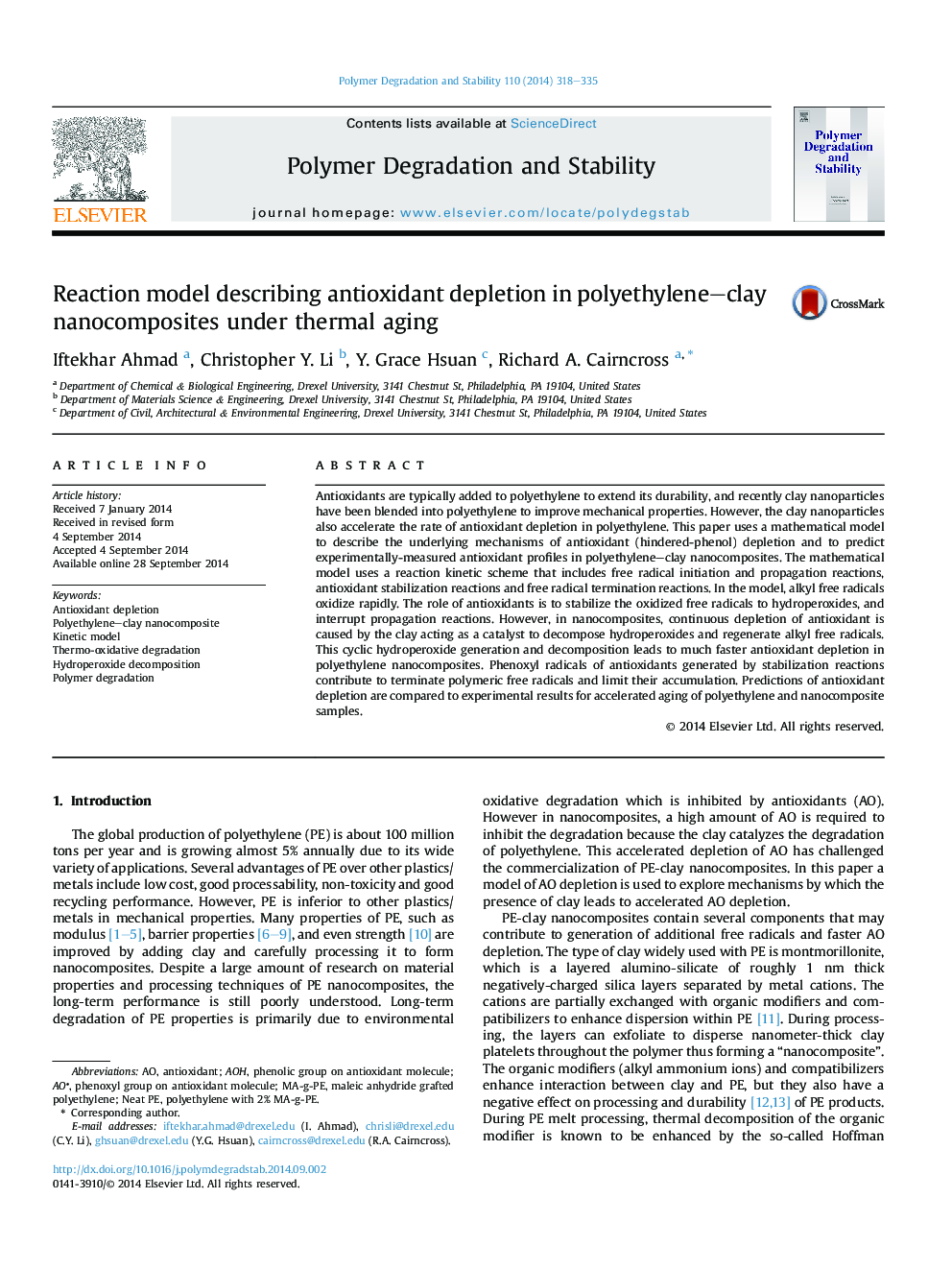| Article ID | Journal | Published Year | Pages | File Type |
|---|---|---|---|---|
| 5201667 | Polymer Degradation and Stability | 2014 | 18 Pages |
Antioxidants are typically added to polyethylene to extend its durability, and recently clay nanoparticles have been blended into polyethylene to improve mechanical properties. However, the clay nanoparticles also accelerate the rate of antioxidant depletion in polyethylene. This paper uses a mathematical model to describe the underlying mechanisms of antioxidant (hindered-phenol) depletion and to predict experimentally-measured antioxidant profiles in polyethylene-clay nanocomposites. The mathematical model uses a reaction kinetic scheme that includes free radical initiation and propagation reactions, antioxidant stabilization reactions and free radical termination reactions. In the model, alkyl free radicals oxidize rapidly. The role of antioxidants is to stabilize the oxidized free radicals to hydroperoxides, and interrupt propagation reactions. However, in nanocomposites, continuous depletion of antioxidant is caused by the clay acting as a catalyst to decompose hydroperoxides and regenerate alkyl free radicals. This cyclic hydroperoxide generation and decomposition leads to much faster antioxidant depletion in polyethylene nanocomposites. Phenoxyl radicals of antioxidants generated by stabilization reactions contribute to terminate polymeric free radicals and limit their accumulation. Predictions of antioxidant depletion are compared to experimental results for accelerated aging of polyethylene and nanocomposite samples.
